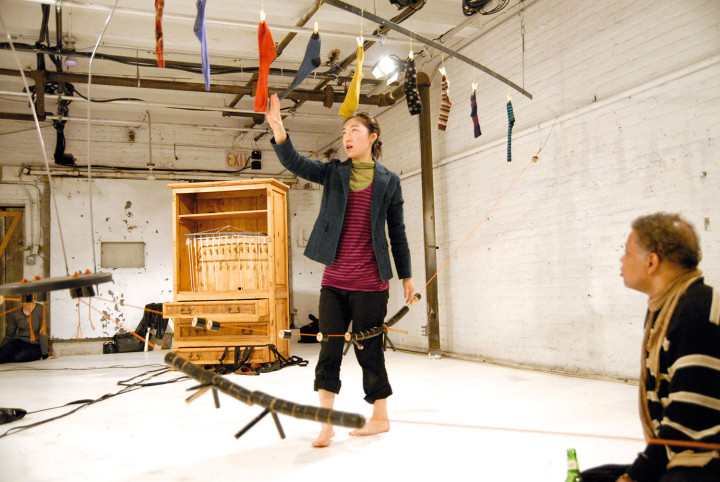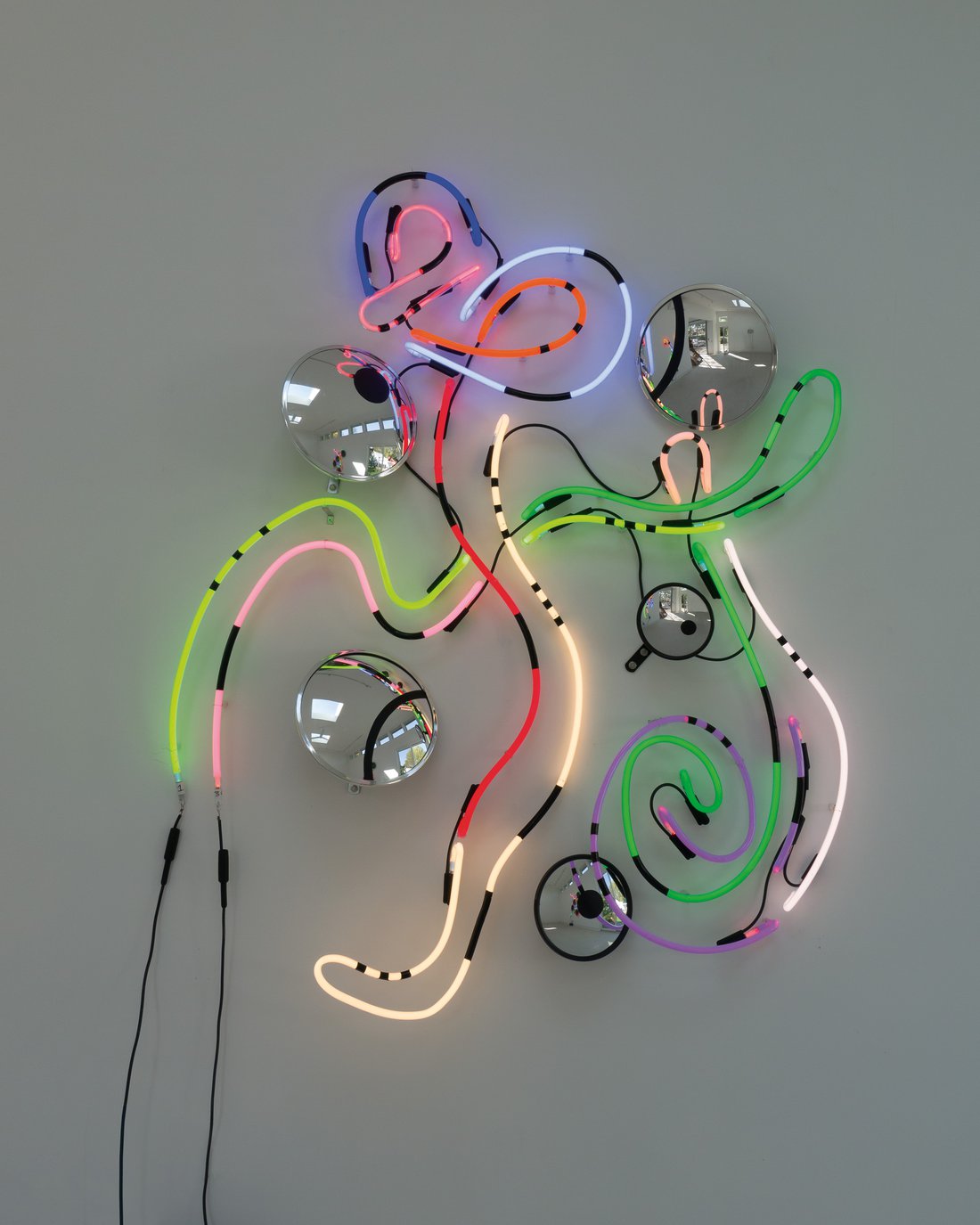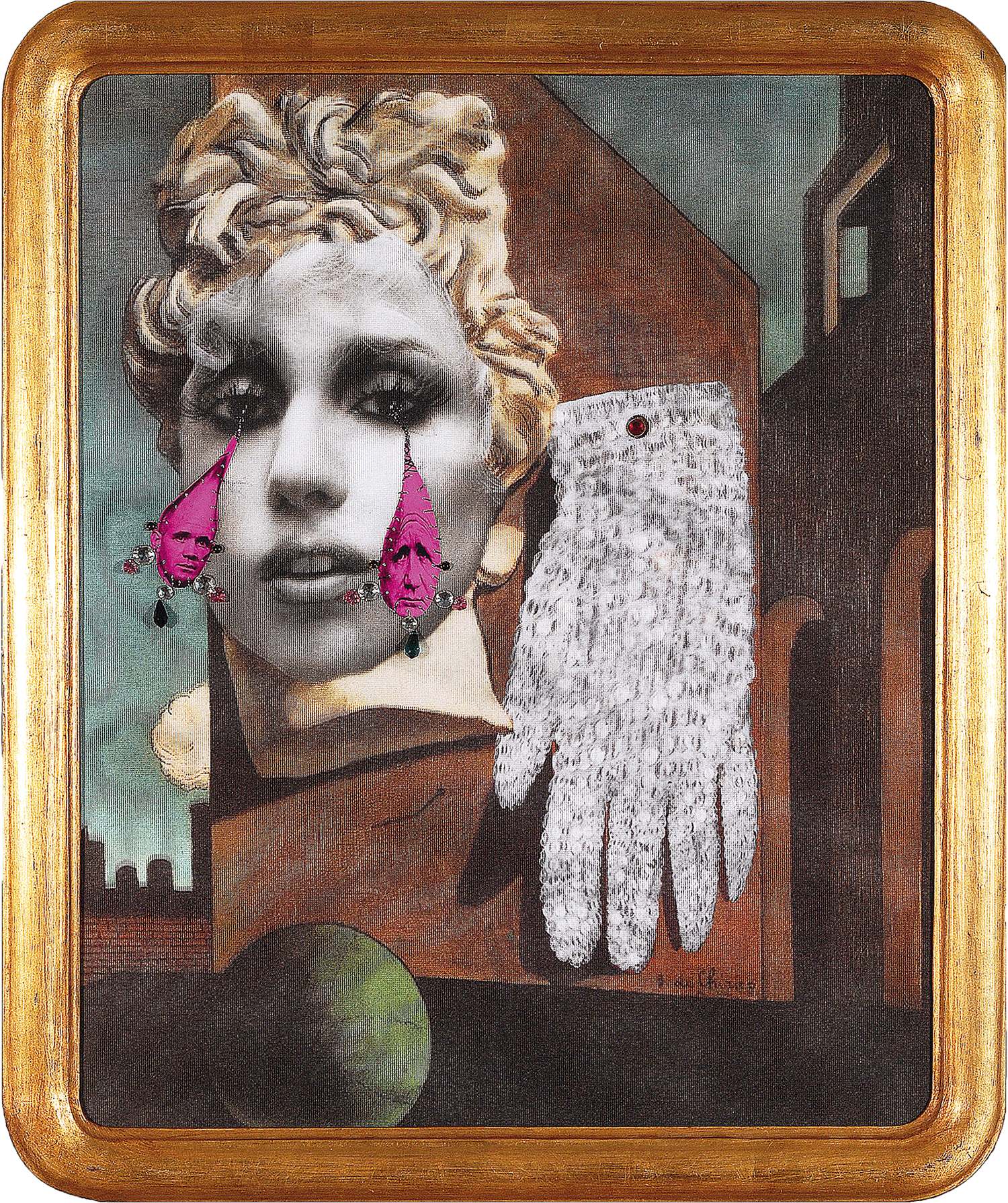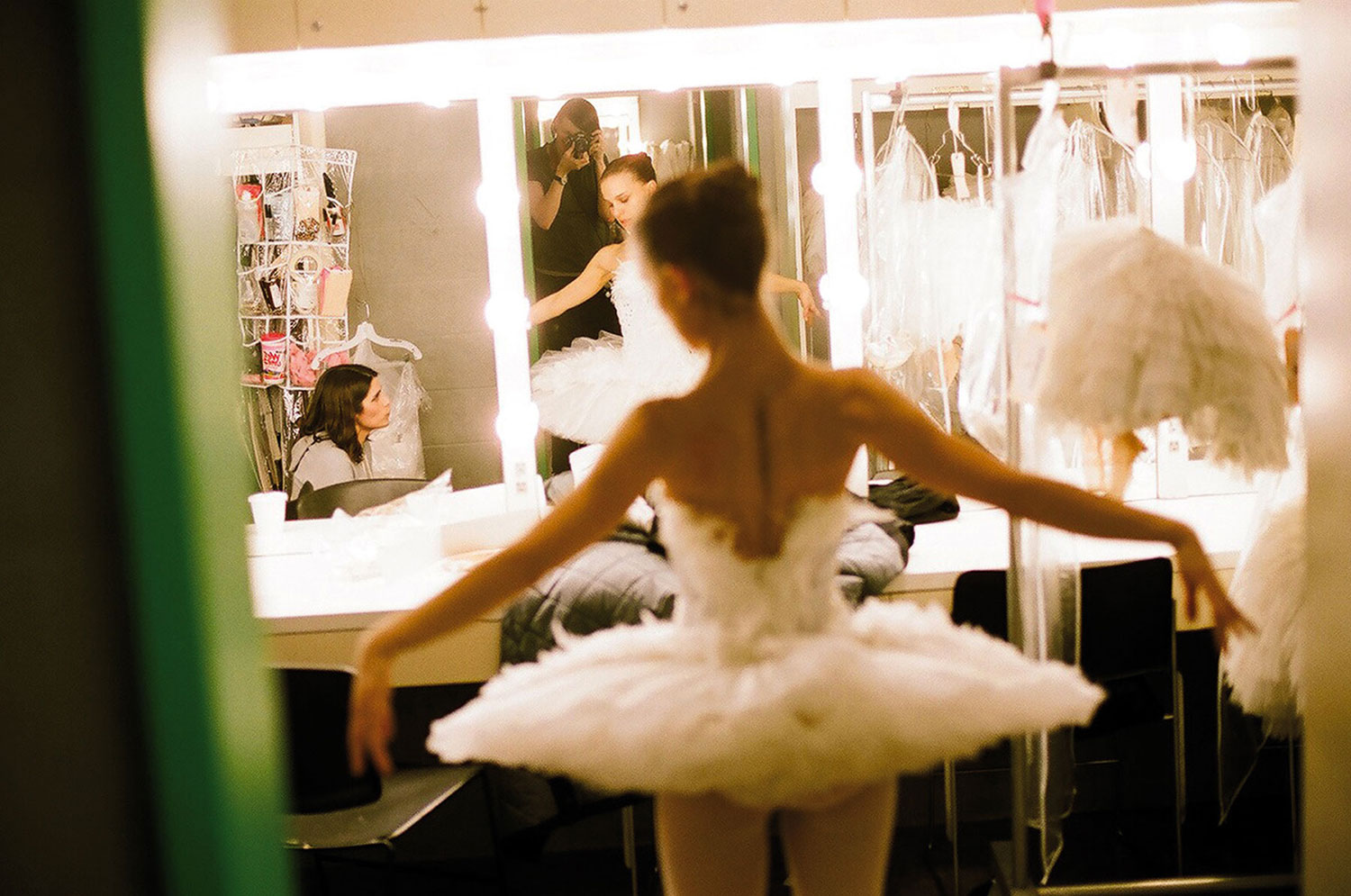
Mary Rinebold: Tell me about your preoccupation with donuts.
Aki Sasamoto: The way I gather material is like going fishing. I go out in the ocean, spread a big net and pick good fish out. In the big ocean of life, you must have some target fish. I intentionally dive into some daily obsessions deeper. As I was getting into donuts last summer, I made a point to capture all the good donuts in New York. Obsessions have to be real. They must convince me that my art is based on what I have been living. Art is an excuse for me to do what I want to do.
MR: And the string? You seem to consistently find a way to involve string in your performances, pulling it with parts of your body, becoming lost within its elaborate web, and surrounding your audience within it as well.
AS: I like objects with a rich metaphorical presence. They point to many different metaphors. String performs all that I tend to talk about: boundary, connection, tension, drawing, sound…
MR: From the titles and content of your performances, such as Secrets of My Mother’s Child with its free-association monologues and one-sided conversations, a theme emerges about your mother and about childhood in the form of vignettes. Are you constructing a fictional reference?
AS: This is another example of how I use obsessions in my art. ‘Mother’ was my obsession during the winter 2009… well, that’s a lie. My obsessions have existed longer. I just assign a time to ‘go for it.’ Making Secrets of My Mother’s Child was an excuse for me to invite my mother to the US and to get to know her.

MR: You have a dance and theater background, and you continue to perform within different settings including theaters, streets and galleries. Between each of these contexts, does the story continue? Is there an overall narrative, or is each performance its own short story?
AS: I am interested in storytelling, which for me is in opposition to storywriting. The former has the logic of improvisation, the latter aims at polishing that logic into a singular true story. Like a traveling storyteller, I work with the same episodes, objects and words over and over again. My role is to stay fresh each time, to accommodate modifications, responding to moments. My brain collaborates with different crowds, environments and times to develop a cluster of variations. This way, I can allow my art to have many entrances and exits.
MR: You like to involve your audience in your performances by speaking to and provoking them. Though it often seems as if you would continue doing the same thing if they were not there. To what extent do you require an audience? AS: Yes, I do continue myself even when they leave. The existence of an audience forces me to momentarily gather my thoughts and body parts to spit out an impromptu story. But they sometimes turn into pumpkins when I get into the introverted state.
MR: If you do continue once the audience has left, when do you stop? How do you change systems?
AS: When things make sense. Emotional activity and physical activity have different velocities. You add the two, and end up with a completely new vector.





